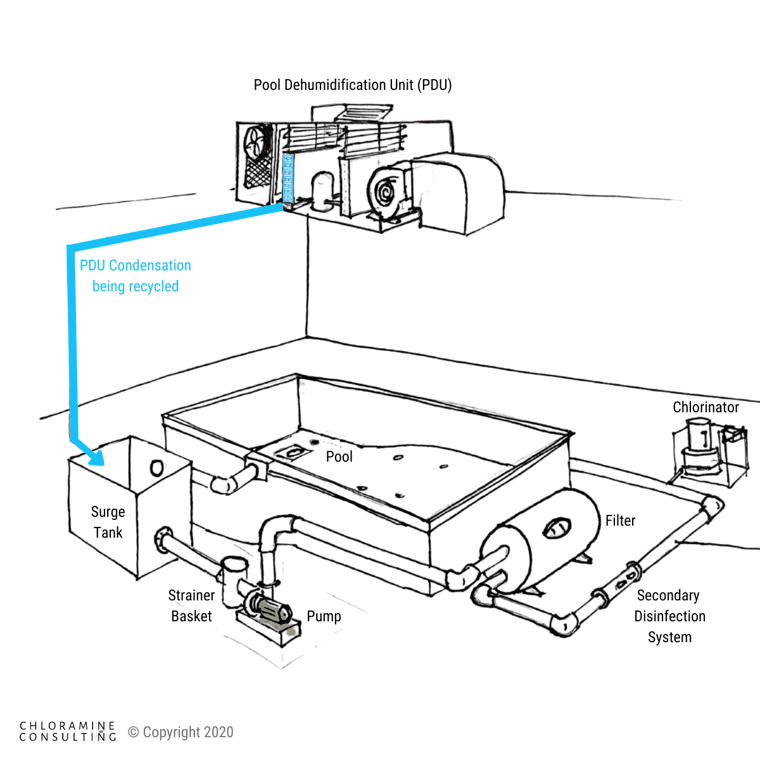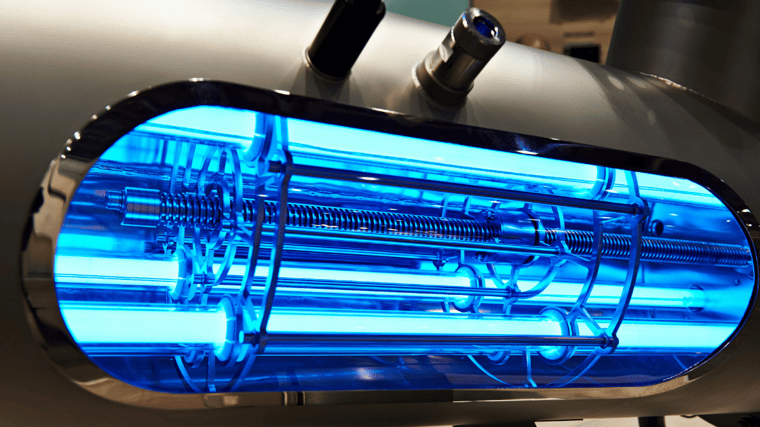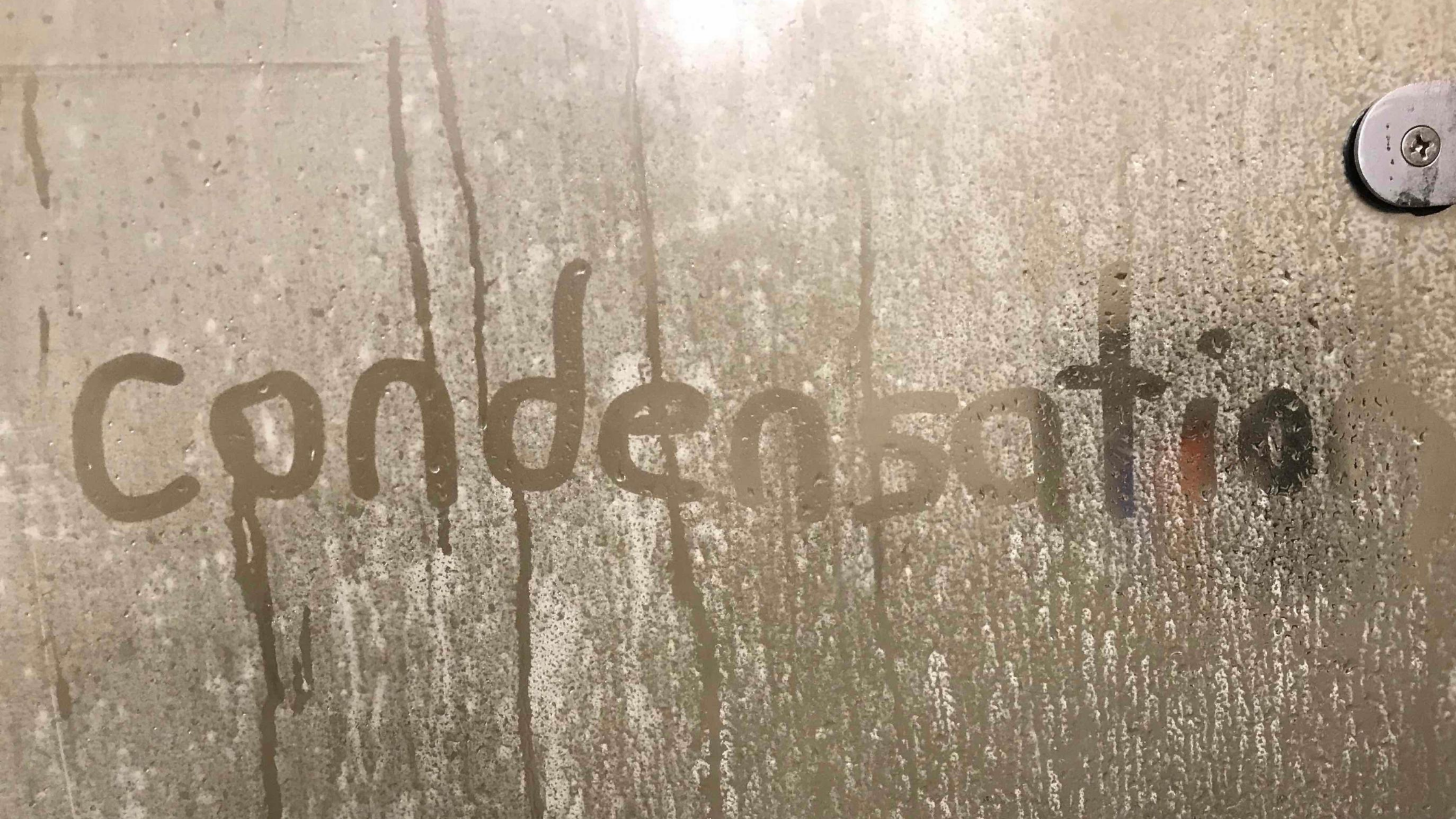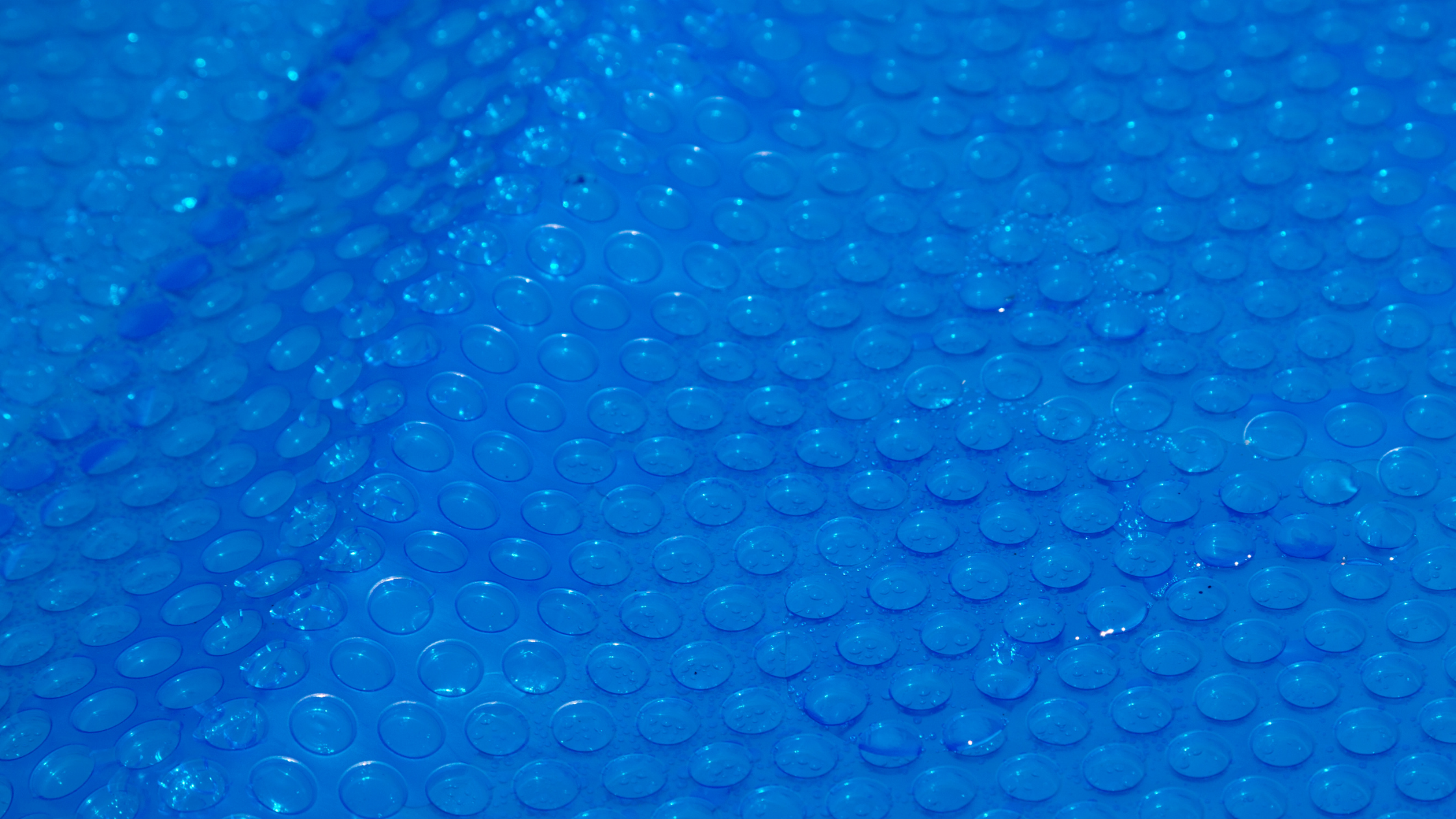The Case for Recycling Pool Dehumidifier Condensation
Today we ask an important question: why are swimming pools required to discard the water that is condensed (via dehumidification) out of the air? In our opinion, this is not only wasteful, it's unnecessary and irrational.
Pool dehumidifiers are designed to maintain a consistent relative humidity (RH) and temperature range in a natatorium. Unlike air conditioners–which are designed to maintain a temperature, a byproduct of which might be moisture removal–a dehumidifier's main purpose is moisture removal. And pool dehumidifiers remove A LOT of moisture in a given year. And because of health code standards, most pools are required to discard this moisture, rather than recycle it.
How much water does a swimming pool lose to evaporation?
Most people overlook the amount of condensation drawn out of the air by the pool dehumidification unit (PDU). This is understandable if you have never opened the door and looked into a PDU before. And even if you do, the moisture only drips from the evaporator coils, so it does not seem like a lot of water. But it is.
Consider this: in a properly dehumidified natatorium, a pool should evaporate approximately its entire volume of water in a given year.1 Think about the amount of gallons that is, and your cost of water to replace it. And this evaporation rate does not even include the water lost from splash-out and filter backwashing! A standard 8-lane lap pool could have over 200,000 gallons (760 m3, or 760,000 L). Not only will you have to pay for chemicals to treat the new water to replace what was evaporated, you will have to pay for the water itself.
But there is an alternative strategy that can dramatically reduce water consumption and waste. The only problem is, most health codes in the United States don't allow it. And we have no idea why.
Recycle condensation back to the pool

We propose an option to recycle the water that is condensed out of the air by the PDU. As mentioned before, while this may flow only as fast as a steady drip, over the course of a year it could be the entire volume of the pool in condensation. Why waste it?
At the time of writing this, health codes do not allow for the re-use of PDU condensation, but we hope to change that. We question the reasons why, because of two things: 1) condensation is pure water, and 2) even if it has impurities, this water will go through the filtration and treatment system prior to flowing into the pool.
Related: Natatorium Design Resources
Condensation is pure water
Source: Toppr.com
Technically, natatorium condensation is not the same thing as distilled water, because the water vapor occurred below boiling temperature. Boiling kills pathogens and contaminants, whereas normal evaporation will not. But at least we know evaporated water leaves minerals, metals and salts behind.
 In the case of indoor pools, we know that airborne chloramine vapor can recirculate through the dehumidifier (depending on whether or not the natatorium has source-capture exhaust, and where the return intake is located). We also know chloramines in then air can condense with moisture on the coils, and the water that drips out is aggressive enough to etch concrete. But don't let the idea of pathogens and chloramines crush the idea of recycling this water, because this water will be treated before going into the swimming pool. If anything, the low pH of this condensate may assist with pH control in the pool.
In the case of indoor pools, we know that airborne chloramine vapor can recirculate through the dehumidifier (depending on whether or not the natatorium has source-capture exhaust, and where the return intake is located). We also know chloramines in then air can condense with moisture on the coils, and the water that drips out is aggressive enough to etch concrete. But don't let the idea of pathogens and chloramines crush the idea of recycling this water, because this water will be treated before going into the swimming pool. If anything, the low pH of this condensate may assist with pH control in the pool.
Water treatment
 Water could flow from the evaporator coil's collection tray in the PDU into the surge tank or influent line of the pool. How this plumbing works may vary depending on the facility, and may require a holding tank and/or booster pump to get it into the pool system. But one thing is for certain: this recycled water should be added prior to the filters and disinfection treatment(s). Even if the recycled water has something nasty in it, it originally came from the pool itself, and would have been treated/filtered anyway.
Water could flow from the evaporator coil's collection tray in the PDU into the surge tank or influent line of the pool. How this plumbing works may vary depending on the facility, and may require a holding tank and/or booster pump to get it into the pool system. But one thing is for certain: this recycled water should be added prior to the filters and disinfection treatment(s). Even if the recycled water has something nasty in it, it originally came from the pool itself, and would have been treated/filtered anyway.
The ideal is to have this water go through a secondary disinfection system and chlorination process before returning to the pool. So if there are chloramines in the condensation (which is possible), the UV, Ozone or AOP system can destroy them before they go into the pool.
This takes minimal additional energy (if any) for the pool system, but saves an enormous amount of water.
Conclusion
We know that dilution can be beneficial for swimming pools to keep total dissolved solids, calcium hardness, salt and cyanuric acid (chlorine stabilizer)2 from accumulating too much. But keep in mind, evaporation leaves these things behind anyway, and the only dilution you would be getting is from backwashing filters and splash-out. In other words, dilution comes from water loss, not water vapor leaving the pool.
We suggest returning the water vapor after it has been condensed in the pool dehumidifier. It's still good water, and because of today's health code standards, it's all going to waste. We could reclaim this water, put it through the entire filtration and water treatment system, and save pools a lot of water, energy and chemicals.
Now it's just a matter of persuading health officials to update their codes...
1 The amount the pool evaporates can be calculated with equations that engineers use when sizing a pool dehumidifier's moisture load requirements. Depth of the pool can change this, as deeper pools have more volume relative to their surface area.
2 Indoor pools should not be using CYA because there is no direct sunlight. An exception to this may be up to 5 ppm for low-use pools to have a reduction in the rate of trichloramine production.

 By
By



